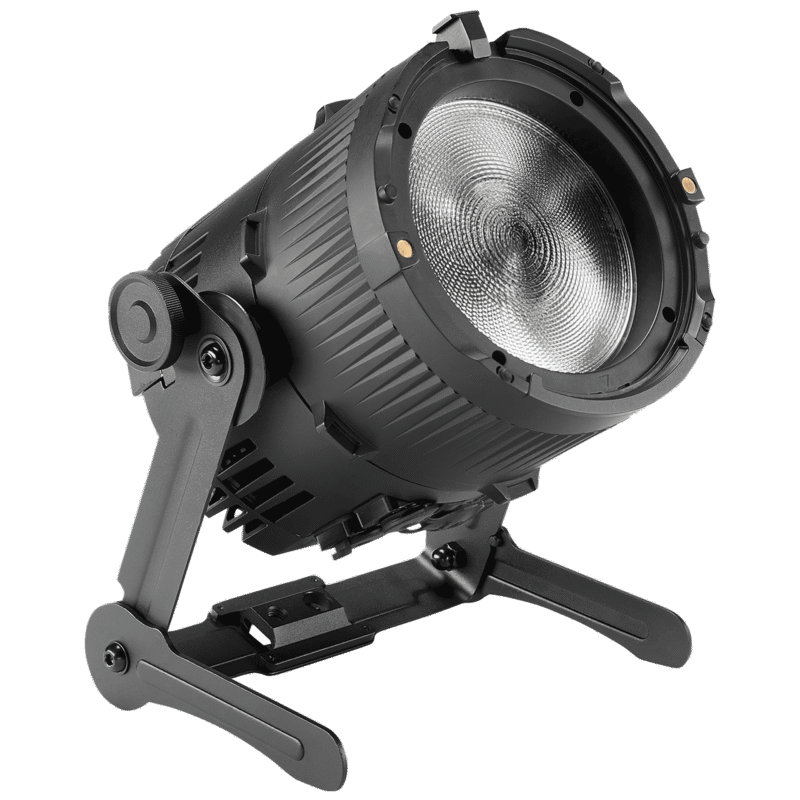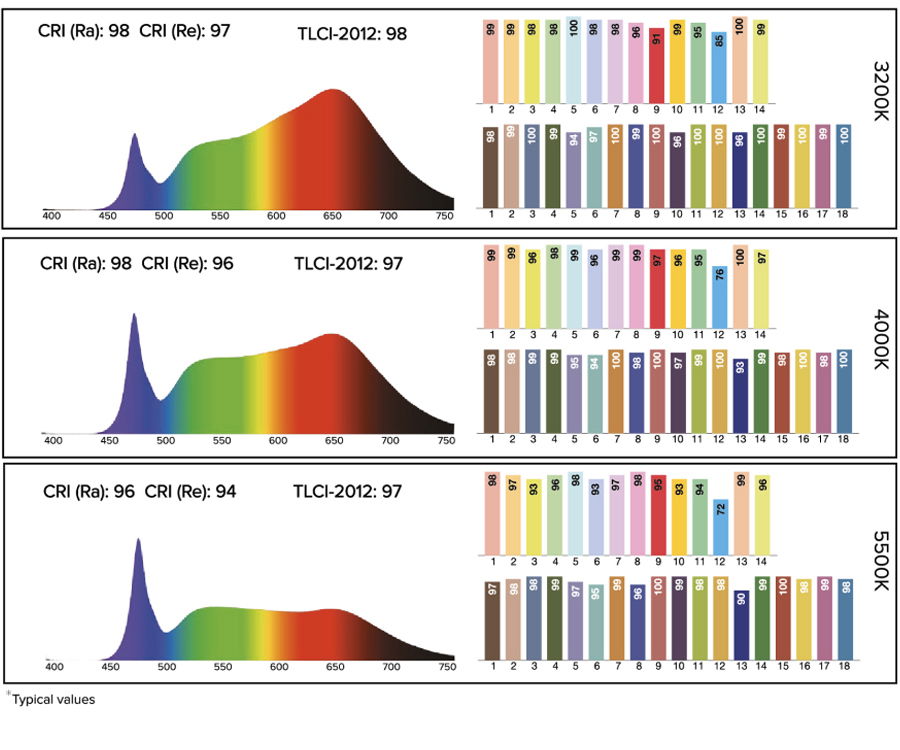产品型号 | AST-QUKPN |
|---|---|
LED引擎 | Titan LED引擎 |
颜色 | RGBMintAmber |
Output Gain | 支持 |
LED功率 | 75 W |
CRI (Ra) / TLCI 3200 – 6500 K (OutputGain关闭状态下) | ≥96 |
Beam Angle | 13° – 60° |
Field Angle | 20° – 75° |
频闪 | 0 – 25 Hertz |
电池运行时间 | 最长续航时间20小时 |
电池运行时间(最大亮度) | 4.5小时 |
电池使用寿命 | 充放电500次后剩余70%电力 |
充电时间(标称值) | 5小时15分钟 |
AC交流输入 | "100 – 240 VAC, 50/60 Hertz, 115 VAC – 2 A / 230 VAC – 1 A" |
AC 连接插件 | PowerCON TRUE1 线缆输入/输出 |
电力消耗(最大) | 100 W |
有线DMX | 支持 |
CRMX接收器 | 内置 |
蓝牙网桥系统(BTB) | 内置 |
无线通信频率 | CRMX, UHF, Bluetooth, WiFi |
无线通信距离 | CRMX/UHF: 300米/330yds 蓝牙:3米/3.3yds |
支持RDM | 有线和无线 |
红外线控制 | 支持 |
与PreBox兼容 | 支持 |
无线IP防护等级 | IP65 |
有线IP防护等级 | IP65 |
使用环境温度 | 0 – 40 °C / 32 – 104 °F |
重量 | 6.567 kg / 14.48 lbs |
尺寸大小(长x宽x高) | 236.2 mm x 195.8 mm x 295.8 mm / 9.3" x 7.71" x 11.65" |
安装选择 | 航空轨道,3/8"- 16 UNC 螺纹,支架 (with 3/8"" – 16 UNC 螺纹, 1/2"孔洞) |

技术规格
盒子里有什么?
- 1 x QuikPunch (AST-QUKPN)
- 1 x QuikPunch支架 (AST-QUKPN-YK)
- 1 x Barndoor遮飞 (AST-QUKPN-BD)
经典光谱
RF射频特性
无线模块 | 调制模式 | ERP(发射功率) | 信道数量 |
|---|---|---|---|
欧盟区:UHF***(863-870 MHz) | FHSS | < 25 mW | 47 |
美国:超高频(917-922.20 MHz) | FHSS | < 25 mW | 53 |
澳大利亚区:UHF (922.30-927.50 MHz) | FHSS | < 25 mW | 53 |
新加坡: UHF (920.50-924.50 MHz) | FHSS | < 25 mW | 41 |
韩国区:UHF (917.9-921.5 MHz) | FHSS | < 25 mW | 10 |
俄罗斯:UHF (868.75-869.12 MHz) | FHSS | < 25 mW | 6 |
日本:UHF (922.80-926.40 MHz) | FHSS | < 25 mW | 19 |
CRMX (2402-2480 MHz) | FHSS | – | 79 |
蓝牙 5.0 LE(2402-2480 MHz) | FHSS | 10 毫瓦(低功耗蓝牙) | 40 |
WiFi (2412-2472 MHz) | DSSS, OFDM | < 100 mW | 13 |
短距离无线电设备通用频段分配频谱使用规范:
频率范围(MHz) | Maximum equivalent radiant power (ERP)Maximum equivalent radiant power (ERP) | 附加参数/频率接入和干扰缓解技术 |
|---|---|---|
865-868 | 25 毫瓦 | Requirements for frequency access and mitigation techniques3) Alternatively, a maximum duty cycle2) of 1% can be used. |
868,0 – 868,6 | 25 毫瓦 | Requirements for frequency access and mitigation techniques3) Alternatively, a maximum duty cycle2) of 1% can be used. |
868,7 – 869,2 | 25 毫瓦 | Requirements for frequency access and mitigation techniques3) Alternatively, a maximum duty cycle2) of 0.1% can be used. |
869,40 – 869,65 | 500 毫瓦 | Requirements for frequency access and mitigation techniques3) Alternatively, a maximum duty cycle2) of 10% can be used. |
869,7 – 870,0 | 25 毫瓦 | Requirements for frequency access and mitigation techniques3) Alternatively, a maximum duty cycle2) of 1% can be used. |
1) The use of adjacent frequency bands within this table as a single fre- quency band is permitted, provided that the specific conditions for each of these adjacent frequency bands are met. 2) „duty cycle“ means the ratio of Σ(Ton)/(Tobs) expressed as a percentage, where ‚Ton‘ is the ‚on-time‘ of a single transmitting device and ‚Tobs‘ is the observation period Ton is measured in an observation frequency band (Fobs). Unless otherwise specified in this general allocation, Tobs is a contin- uous period of one hour and Fobs is the applicable frequency band in this general allocation (table). 3) Frequency access and interference mitigation techniques shall be used whose performance level at least meets the essential requirements of Directive 2014/53/EU or the Radio Equipment Act (FuAG). Where relevant techniques are described in harmonized standards, the references of which have been published in the Official Journal of the European Union pursuant to Directive 2014/53/EU, or parts thereof, performance shall be ensured which is at least equivalent to those techniques.
